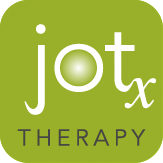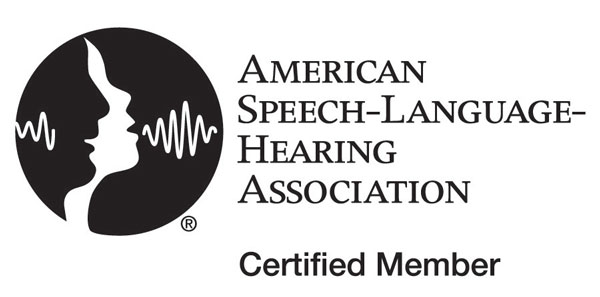It’s Research Tuesday! Join us! If you would also like to blog about research related to our field, sign up at Gray Matter Therapy! Thanks to Rachel Wynn for heading this collaboration! You can also follow the chatter on Twitter using the search #ResearchTues.
The Article:
An Analysis of Aphasic Naming Errors as an Indicator of Improved Linguistic Processing Following Phonomotor Treatment
Diane L. Kendall; Rebecca Hunting Pompon; C. Elizabeth Brookshire; Irene Minkina; Lauren Bislick
American Journal of Speech-Language Pathology May 2013, Vol.22, S240-S249. doi:10.1044/1058-0360(2012/12-0078)
History: Accepted16 Oct 2012,Received25 Jul 2012
Diane Kendall, the director of the Aphasia Research Laboratory at the University of Washington, has been studying the relationship between phonology and aphasia for some time now. The Publication, Phonomotor Rehabilitation of Anomia in Aphasia reports her most recent findings after her second phase of research in this area.
“We have shown that intensively delivered phonomotor treatment not only improves confrontation naming performance on trained words but, as predicted by the theory motivating it, also achieves generalization to naming of untrained words, some aspects of discourse production, and indicators of quality of life (Kendall, Brookshire, Oelke, & Nadeau, 2012; Kendall et al., 2008).”
The theory behind this work is really interesting and that alone makes reading the actual publication worthwhile. My short version of the theory behind Phonomotor Treatment is this: words are accessed through bidirectional activation spreading. That means your brain searches for a concept by accessing the meaning of words and phonologic representations (either auditory- the pronunciation of a word, or visually- the written word) at the same time. This improves accuracy of word retrieval and speeds processing time. Traditionally, speech therapists have focused on exercises that improve access to word meanings (semantics) without as much regard to the phonological components of words. This treatment attempts to address the “bottom up” aspect of word retrieval.
All participants in the study had aphasia with lexical retrieval deficits due to left hemisphere stroke and did not have significant apraxia of speech. They each received 60 hours of phonomotor training (One hour sessions BID 5 days a week for 6 weeks.) Now on a practical level, that’s much more intense than I can deliver in an outpatient setting! Insurance won’t cover BID outpatient therapy. But that is another conversation! It would be great to have a discussion with the researchers about the needed frequency for this intervention and their rational for the intensity.
This is what you should expect from the treatment: The benefits of phonomotor training were seen immediately after treatment and 3 months post treatment with continued improvement. They include gains in the following areas: Improved word finding skills and a possible shift in linguistic processing indicated by a decrease in errors of omission (which is associated with a milder form of aphasia), an increase in semantic errors (improved access to semantic activation during word retrieval), and an increase in mixed errors (which suggests improved access to phonological activation during word retrieval tasks.) So even though your clients will still be making some word finding errors, the quality of those errors should be different.
This is how you do the treatment: There are two stages. Stage one focuses on sounds in isolation and lasts for 15 sessions. Stage two focuses on sounds in various combinations and lasts for 45 sessions.
Here is the authors’ description of the protocol:
The goal of stage one was to engage individual sounds by teaching (a) motor movements and descriptions with the use of a mirror and therapist and participant feedback (e.g., the tip of your tongue is behind your front teeth and taps to make the sound /t/); (b) perceptual discrimination (e.g., do /t/ and /d/ sound the same or different?); (c) production (e.g., repeat after me…say /t/); and (d) grapheme‐to‐phoneme correspondences (e.g., letter for each sound is displayed). The goal of stage two was to extend the skills acquired in stage one to various phoneme sequences. Production, perception, and graphemic tasks remained the same in this second stage, with the one difference that sounds would be produced in combinations rather than isolation. Training progresses hierarchically (e.g., VC, CV, CVC, CCV, VCC, CCVC, CVCC, CCVCC). Upon mastery of 1‐syllable treatment stimuli, 2‐syllable stimuli are introduced and trained. The goal of treatment is to strengthen and improve each participant’s phonological awareness to the extent that he or she is able to repeat, read, spell, parse, and blend all treatment stimuli by the end of the 6‐week treatment program. Both real‐word and nonword stimuli were trained using the same procedures detailed below.
Stage 1
Exploration of sounds. The participant was shown a mouth picture of a sound and was asked to look in the mirror and repeat after the therapist to make the sound. Knowledge of results was initially given at 100% frequency following each production and then was faded to 30% across trials. Following production, the therapist asked the participant what he or she saw and felt when the sound was made. Socratic questioning was used to enable the participant to “discover” the auditory, visual, articulatory, and tactile/kinesthetic attributes of the sounds (e.g., “What do you feel when you make that sound?”).
Motor description. A description of each sound was provided. The therapist described what articulators were moving and how they move (e.g., “for /p/ the lips come together and blow apart, the voice box is turned off, the tongue is not moving”). The participant was asked to repeat the sound and then was asked to describe how the sound was made. For example, “Do your lips or tongue move to make that sound?”
Perception tasks. The therapist made a sound (e.g., /p/) and asked the participant to choose that sound from an array of mouth pictures (e.g., /f/, /g/, /p/).
Production tasks. Productions of sounds were elicited auditorily (repetition), visually (mouth picture), and via motor description (e.g., “make the sound where your lips come together and blow apart”). Socratic questioning was used for correct and incorrect responses. For example, “you said /b/ — is that the sound where your tongue taps the roof of your mouth?”
Graphemic tasks. Graphemic tiles representing sounds were placed on the table with the mouth pictures. The participant was asked to select a single grapheme and place it on a picture that represented that sound. When the participant was finished, the therapist used Socratic questioning (e.g., “this letter says /f/, does this picture represent /f/?”). If the production was correct, the therapist moved to the next letter tile; if the production was incorrect, the therapist set aside the letter tile and moved to the next tile. After the participant was able to correctly match graphemes to mouth pictures, graphemes were then used in the production and perception tasks for the remainder of the treatment program.
Stage 2
Perception and graphemic task. The therapist produced a real‐word or nonword sound combination (e.g., VC or VCC‐VC) and then asked the participant to arrange mouth pictures or graphemes to depict the target. For example, if the participant heard the VC ip, he or she would select the graphemes /i/ and /p/.
Production and graphemic task. The therapist showed either mouth pictures or grapheme tiles and asked the participant to produce the sounds within a real word or nonword individually and then blended together. For example, the participant would say “/p/ /ee/ /f/ …that says /peef/.” In this example, the therapist would say “You said /peef/. Does that match these letters?” Next, the therapist would change one sound in the word (e.g., /peef/ changed to /feef/). The participant was cued to say the old word by touching each sound individually and then identifying the new sound and blending the new word (e.g., the old word says /p/ /ee/ /f/, /p/ is removed and /f/ is added, the new word now says /feef/). One sound change within a word was made for a series of 5–10 nonwords.
Measuring Progress:
I have included the real words used to teach this protocol and measure progress because they were not just any random group of words. These words were carefully selected based on their low phonotactic probability (ie, how common is that vc or cv combination in English and how common is that phoneme in that word position) and high neighborhood density (ie, how many other words can you create from the target word by adding, deleting, or substituting a letter.) Obviously the trained stimuli are the treatment words and the untrained stimuli are the assessment words for pre and post progress measures. And regarding the use of non-word phoneme combinations during production tasks, have fun making that up!
| Trained stimuli | Untrained stimuli |
| bow | toy |
| hay | tire |
| leather | wire |
| jury | iron |
| ache | age |
| shadow | baby |
| boot | valet |
| fig | lady |
| maze | whip |
| mop | beef |
| heater | birth |
| plane | ditch |
| half | wheel |
| tower | chauffeur |
| teacher | laughter |
| feeder | turkey |
| gravy | fisher |
| day | razor |
| song | jeans |
| ivy | clover |
| shoulder | pie |
| treasure | fur |
| lawyer | knee |
| movie | fire |
| ape | egg |
| itch | genie |
| polo | halo |
| lasso | meadow |
| knob | witch |
| cave | knot |
| bird | shower |
| jail | break |
| owl | bride |
| ladder | bruise |
| father | tiger |
| jockey | speaker |
| level | poem |
| ranger | |
| gray |





